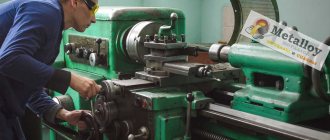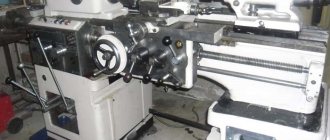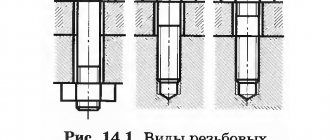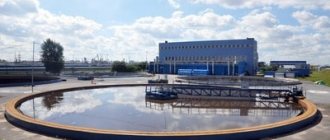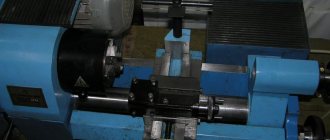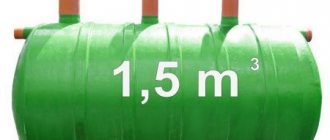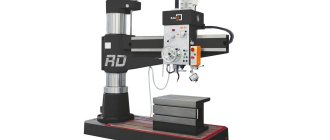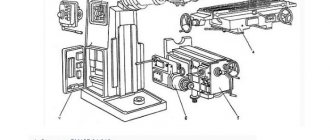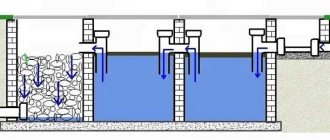The hydraulic cylinder is a fundamental hydraulic component. It is used as a hydraulic drive that converts the energy of the working fluid into useful work. The incoming hydraulic fluid under pressure acts on the surface of the piston of the hydraulic cylinder. This causes translational movement of the piston and, thus, the piston connected to the hydraulic cylinder rod creates the required load. The hydraulic cylinder uses hydraulic mineral oil, synthetic oil or emulsions and in certain cases water is used. Hydraulic cylinders basically consist of two elements: a body and a rod with a piston attached to it. The hydraulic cylinder sleeve is equipped with a bottom on one side and a ground bush on the other. The rod exits through a hole equipped with a wiper in the ground bushing. A piston equipped with seals and sliding rings connected to a rod “divides” the internal volume of the hydraulic cylinder liner into two areas. When hydraulic fluid is supplied to the piston area of the hydraulic cylinder, pressure is created and, with the help of the piston, the rod moves in a linear direction. If you perform the opposite action and supply working fluid to the rod cavity of the hydraulic cylinder, the rod also moves linearly, but in the opposite direction. This type of hydraulic cylinder is called double acting and is the most common of hydraulic cylinders.
Hydraulic cylinders are used in the nuclear industry, metallurgical equipment, general mechanical engineering, shipbuilding, mobile equipment, oil production equipment, chemical industry, mining equipment, construction and road equipment, lifting and earth-moving machines, aviation, turbine construction. The industrial equipment plant manufactures and sells hydraulic cylinders according to customer drawings, the markings selected below or the completed QUESTIONNAIRE . According to the technical characteristics, the hydraulic cylinder is equipped with a rod with a stroke of up to 5000 mm (5 meters) and reaches a diameter of 160 mm, with a piston up to 250 mm in diameter. The working pressure of the produced hydraulic cylinder does not exceed 700 Atm. (70 MPa). The basic parameter of a hydraulic cylinder is fastening - it is carried out according to certain standards or according to technical requirements specified by the customer. The hydraulic cylinder body is made both in a welded cylindrical structure and in a version with tie rods. The industrial equipment plant produces hydraulic cylinders according to the customer’s drawings or sketches, or develops and manufactures hydraulic cylinders compiled according to the structural designation drawn up by the customer or with the help of the company’s technical specialists.
GC .1 – 100 – 80 – 200 – 20 – 04 / X 2 / D – A1 / A2. A
Designation of the hydraulic cylinder type and its operating principle:
GC - (general purpose hydraulic cylinder)
GT - (telescopic hydraulic cylinder)
.1 — double-acting piston hydraulic cylinder with one-sided rod;
.2 — double-acting piston hydraulic cylinders with a double-sided rod;
.3 — single-acting piston hydraulic cylinders;
.4 — plunger hydraulic cylinder;
100 – designation of the diameter of the piston (plunger) of the hydraulic cylinder from 40 mm to 250 mm
80 – designation of the diameter of the hydraulic cylinder rod from 25 mm to 160 mm
200 – designation of the hydraulic cylinder rod stroke from 10 mm to 5000 mm
20 – nominal (working) pressure of the hydraulic cylinder from 10 MPa to 70 MPa
04 / X 2 / D – type of hydraulic cylinder
A1 – placement of the front boom (fluid supply to the rod end) on the hydraulic cylinder
A2 - placement of the rear boom (supplying fluid to the piston cavity) on the hydraulic cylinder
X – additional options
. D — presence of damping;
. A - made of light alloy materials;
. T – presence of inhibition
. UHL - Climatic modification and placement category according to GOST 15150
The manufacturing process of hydraulic cylinders.
Hydraulic cylinder parameters and characteristics
To buy a hydraulic cylinder, you need to determine its performance characteristics and, depending on this, select a product with the necessary parameters. Sometimes there is a need for hydraulic cylinders with unique parameters - in this case, manufacturers of hydraulic equipment meet customers halfway and make changes to standard models or develop an individual project in accordance with the technical specifications.
Types of hydraulic cylinder
A hydraulic cylinder can have several design options. In the simplest version, the working fluid moves the piston in only one direction, and it returns to its original state due to external forces or a return spring installed in the rod cavity. This is a single acting hydraulic cylinder.
.
A more complex design involves alternating supply of working fluid on both sides of the piston and, accordingly, performing useful work both during forward and reverse stroke. This is a double acting hydraulic cylinder
.
Usually the rod fits completely in the cylinder and extends only on one side, but there are also models of hydraulic cylinder with a double-sided rod
, which is longer than the body and does work on both sides of the cylinder.
Telescopic hydraulic cylinders are widely used
, designed on the principle of a retractable antenna: the magnitude of their full working stroke can be many times greater than the length of the folded cylinder.
Main parameters of the hydraulic cylinder
A hydraulic cylinder performs useful mechanical work (lifts loads, operates machines and tools, etc.), so power is the key parameter. It is proportional to the piston area and the working pressure in the hydraulic system.
The magnitude of the working stroke is the maximum distance to which the cylinder rod extends when performing useful work. It depends on the length of the rod. Now customers have the opportunity to buy a hydraulic cylinder with almost any parameters: for example, in the mining industry, hydraulic cylinders with a rod stroke of several meters, a piston diameter of more than a meter and a working pressure of tens of megapascals are used.
Hydraulic cylinder mounting
Before you buy a hydraulic cylinder, you need to consider how to attach the body and rod. The body can be attached by welding, on axles, lugs, or a fork. The rod can be fitted with a fork, a bushing, an external or internal thread, an eye with a bearing, etc.
Hydraulic cylinder markings
The main parameters of the hydraulic cylinder, indicated in the marking in accordance with GOST 15150-69, are as follows:
- Single or double acting
- With single or double stem
- Piston stroke (mm)
- Piston diameter (mm)
- Rod diameter (mm)
- Method of fastening the body and rod (according to the GOST table)
- Climatic version (U, UHL, HL, T)
For telescopic cylinders, the marking also indicates the number of plungers (elbows). Please note that hydraulic cylinder markings may vary from manufacturer to manufacturer.
Buy a hydraulic cylinder from Italian components
The domestic enterprise "Gidrolast" produces standard hydraulic cylinders (welded and bolted), as well as non-standard hydraulic cylinders for all areas of industry and transport, and specially designed hydraulic cylinders (for use in aggressive environments and difficult climatic conditions). Working pressure up to 40 MPa, working stroke up to 12 m, piston diameter up to 1.5 m. Assembly is carried out on modern semi-automatic lines based on components from a large Italian manufacturer Gidrolast Srl. There is a network of warehouses and service centers in Russia and a number of neighboring countries.
To buy a hydraulic cylinder produced by Gidrolast, just leave a request on the company’s website or call the nearest office.
The manufacturing process of hydraulic cylinders.
For the production of hydraulic cylinders, at the first stage, the drawings are agreed upon with the customer.
The hydraulic cylinders of the Industrial Equipment Plant use rod rings, wipers, piston seals and support rings from global manufacturers such as Simrit, Forsheda Polipac, Merkel, Busak Shamban, Hallite, which will increase the service life of the hydraulic cylinder at least twice, due to increased wear resistance and increased strength, but at the customer’s request, hydraulic cylinders are equipped with sealing elements made in Russia or from another manufacturer of rubber products. After approval of the hydraulic cylinder drawings, metal parts and blanks are processed on machines and CNC machine centers, depending on the complexity of manufacturing the hydraulic cylinder. Next, the hydraulic cylinder enters the assembly point. The rod with the piston with installed sealing connections is placed in the sleeve, after which the rear and front covers of the hydraulic cylinder are welded or connected with tie rods. After assembly, the manufactured hydraulic cylinder is tested in accordance with GOST standards. The hydraulic cylinder enters the painting booth after the above steps. Special primers are applied to the hydraulic cylinder and, after drying, painted in at least two layers. YOU CAN FIND OUT THE PRICE, ORDER, PURCHASE AND BUY A HYDRAULIC CYLINDER BY CLICKING ON LINK E
Types (classification) of hydraulic cylinders
Hydraulic cylinders can be divided into two types according to their design: single-sided and double-sided.
In the first case, the movement of the output shaft under the action of the working fluid is possible only in one direction, and in the second, the movement of the rod under the action of the working fluid is carried out in two opposite directions.
Double-acting cylinders are manufactured with a single-sided, double-sided or telescopic rod; they can also be equipped with a damping device that reduces the speed of movement of the output link at the end of the stroke.
To drive the working parts of excavators, cranes, loaders and other mobile machines, double-acting cylinders with a single-sided rod are most widely used. The force on the rod and its movement can be directed in both directions, depending on which of the cavities the working fluid is injected into.
The main parameters of hydraulic cylinders are nominal pressure, piston diameter and stroke. The last two determine the force developed by the hydraulic cylinder at a given pressure.
Domestic-produced earth-moving, leveling, land reclamation, municipal, peat-extraction, fire-fighting, load-lifting and hoisting-and-transport machines usually operate at nominal pressures of 10, 16, 25, 32 MPa, and the peak values of this series are 20, 32, 40, 50 MPa with speeds rod, not exceeding 0.5 meters per second.
One of the main parameters when choosing a hydraulic cylinder is the level of nominal pressure. However, when assessing the technical life, the operating modes of the cylinders at maximum and peak pressures are decisive.
Now we can outline an approximate algorithm for selecting a hydraulic cylinder:
- 1. Based on the layout conditions, find the connecting and overall dimensions
- 2. From the external load conditions, determine the calculated value of the force of the hydraulic cylinder driven to the rod
- 3. Select the diameter of the hydraulic cylinder with the force required to overcome the external load
- 4. Determine the design of the hydraulic cylinder and the method of its fastening
- 5. Determine the stroke of the hydraulic cylinder rod
- 6. To ensure the required force, select the nominal pressure
- 7. Select a cylinder with the required piston and rod diameter taking into account the speed value
- 8. Based on the specified speed of movement of the rod, the flow rate of the working fluid is determined
Looking for a hydraulic cylinder? Our specialists will always help you with your choice.
Select a hydraulic cylinder
Hydraulic cylinders
General provisions
Hydraulic cylinders are designed to convert fluid flow into mechanical energy of a moving link, which can be either a rod or a body (sleeve) of a hydraulic cylinder. Depending on the design, there are hydraulic cylinders with one-way and two-way output rods, single-acting and double-acting piston cylinders, and plunger cylinders. In addition, hydraulic cylinders are produced both with and without brake devices in the final positions.
Application area
These recommendations apply to piston hydraulic cylinders with single-sided and double-sided double-acting rods without braking at the end of the stroke, for a nominal pressure of 16 MPa, a maximum operating pressure of 32 MPa, used to move the working parts of machines and industrial equipment.
Normative references
This standard uses references to the following standards:
- GOST 6357-81 Cylindrical pipe thread
- GOST 6540-68 and 14063-68 Hydraulic cylinders and pneumatic cylinders. Rows of basic parameters
- GOST 11284-75 Through holes for fasteners. Dimensions
- GOST 14140-81 Basic standards of interchangeability. Tolerances for the location of the axes of holes for fasteners
- GOST 17752-81 Volumetric hydraulic drive and pneumatic drive. Terms and Definitions
- GOST 25020-93 Volumetric hydraulic drives and pneumatic drives. Cylinders. Connecting threads of rods and plungers. Types and sizes
- GOST 16516-80 Conditional openings of hydraulic and pneumatic systems.
- DIN2391/DIN 2393 Cylinder pipes St52-3 BKS
Terms and Definitions
Terms and definitions according to GOST 17752.
Main parameters of cylinders
The diameters of the cylinders must correspond to the following series: 25, 32, 40, 45, 50, 55, 60, 63, 65, 70, 75, 80, 90, 100, 105, 110, 115, 120, 125, 130, 140, 150, 160, 180, 200
The rod diameters must correspond to the following series: 8,10, 12, 14, 16, 18, 20, 22, 25, 28, 30, 32, 35, 36, 40, 45, 50, 5, 56, 60, 63, 65, 70, 75, 80, 85, 90, 100, 110 mm.
Tolerances on the stroke value of the rod.
| Rod stroke, S, mm | Tolerance, mm | |
| from | before | |
| 0 | 499 | +3 |
| 500 | 1249 | +4 |
| 1250 | 3149 | +6 |
Table 1
The choice of design is determined by the operating conditions of the hydraulic cylinder, types of connection and method of fastening, the force that the hydraulic cylinder must develop, working pressure, nature of work, dynamics, speed of piston movement, type of working fluid and other parameters. The main design options for the method of fastening the rod and body (sleeve) of the hydraulic cylinder:
1. Eyelets with articulated bearings on both sides. 2. Radial plain bearings on both sides. 3.Adjustable front eye (with swivel bearing or radial plain bearings). 4. Hydraulic cylinder with holes in the eye and rod. 5. Fork at the front, articulated bearing at the rear. 6. Pivot bearing in the eye and thread on the rod. 7. Mounting plates and threads on the rod. 8. Flange mounting.
9. Double-rod hydraulic cylinder. 10. Trunnion and thread on the rod.
11. Trunnion and eye on the rod. 12. Design of a hydraulic cylinder on tie rods.
General recommendations for hydraulic cylinder calculations
The cylinder can be selected by calculations Hydraulic cylinder calculation
Hydraulic cylinder design elements
The hydraulic cylinder can be divided into three main elements:
No move knot. Includes permanent elements of the hydraulic cylinder body: front cover, piston, rear cover, barrels or fittings for supplying working fluid, seals.
Sleeve-rod assembly. It consists of a sleeve and a rod, the values of which are taken as the sum of the width of the piston, the front cover, the magnitude of the working stroke and the extension necessary for assembling and ensuring the operability of the hydraulic cylinder.
"Attachment" node. It consists of fastening elements for the body and rod with or without radial or articulated bearings.

